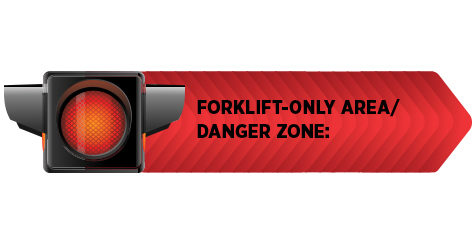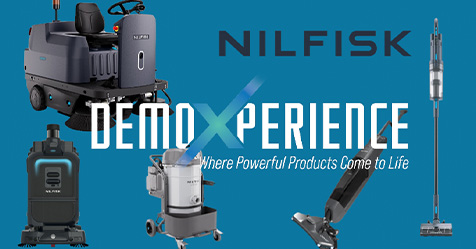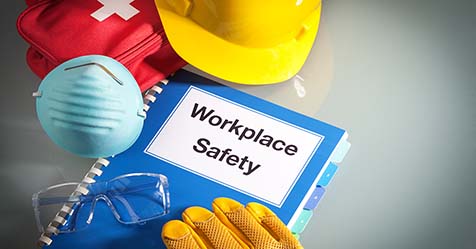In a busy warehouse or distribution center, every aspect of business operations are studied and refined for maximum efficiency. Adjacent processes that aren’t direct contributors to the business don’t always get the same scrutiny, but they can have a significant impact on how smoothly the business runs.
Take warehouse floors. Literally everything rests on them, but it’s easy to take them for granted – unless the condition of the floor starts interfering with business. With this in mind, it’s worth applying business process standards to cleaning and maintaining warehouse floors to help make sure the floors don’t interrupt operations.
Defining Your Workload
The first step to increasing the efficiency of any process is to define the current state. Taking the time to study the process allows an operations team to begin to see opportunities for efficiency. It also helps the team create a fact-based case for change that can be verified and defended. Conducting a site-needs analysis, also called workloading, involves four steps that help define the cleaning process and resources involved.
Step No. 1: Inventory the Space
Measure the amount of cleanable square footage as accurately as possible. Categorize spaces that might require special cleaning processes and make note of objects and obstructions that impact cleaning efficiency.
Step No. 2: Build a Scope of Work
List the cleaning tasks needed for each area. Define standards for cleanliness in each area, and note possible risks associated with falling below the required standard.
Step No. 3: Determine Labor Hours
Calculate how much time it takes to clean each area to your defined standard. This can be done by observing how much space (in square feet) your team can clean in an hour (the production rate), then dividing the cleanable square footage of the space by the production rate. The resulting task time can be multiplied by the number of times the task needs to be completed in a year to calculate the total labor hours per year for that task. In some industries, generalized studies may be available with benchmarked labor hours for common cleaning tasks. ISSA’s new Workloading and Bidding Tool is one resource that can aid with these types of calculations.
Step No. 4: Calculate Labor Costs
Multiply the annual hours for a task determined in Step No. 3 by the wage rate. Some companies also include a percentage for known costs like taxes, insurance, and benefits. The final labor cost also includes equipment depreciation, background checks and drug testing, uniforms, and overhead/administrative costs. This data can be used to examine resource allocation and make changes to improve outcomes or reduce total labor hours.
Once a company establishes workloading numbers, the result is a tool that can be used to examine cleaning practices and priorities. It can also help predict how process changes, such as an investment in equipment, might affect labor costs.
Choosing the Right Suite of Equipment
The information collected for a workloading exercise can also be used to help make choices about the mix of cleaning equipment a facility manager will need to efficiently maintain a warehouse space. For some spaces, one or two pieces of equipment may be enough to perform maintenance tasks without disruption, but many facilities are far more complex. The space inventory from Step No. 1 of the workloading exercise provides good data that can help categorize spaces.
How much of the cleanable space is in wide aisles or open areas that can be cleaned quickly with a large scrubber or sweeper scrubber? Are there important areas where a smaller machine might actually drive productivity gains – areas where racking, tight-radius turns, or pallets complicate the cleaning path for a large piece of equipment?
On loading docks or transitional areas to a building’s exterior, could a sweeper help manage the amount of dirt and debris entering a building?
Every facility has its own set of circumstances, from industry regulations that prescribe cleaning standards and routines, to the physical demands and restrictions of the space, to the time pressures of a fast-paced work environment. Virtually all of these circumstances can and should be documented in a space inventory – where they can be used to help determine the right mix of equipment to drive efficiency in cleaning practices.
Meet the Demands of a Fast-Paced Environment
Once a suite of floor care equipment is in place and processes are streamlined for efficiency, it’s important to follow steps to make sure the machines are functioning well in order to maximize uptime. Machine maintenance is often an afterthought, but it is a critical part of driving efficiency in your floor care program.
- Follow a daily checklist. A checklist of pre- and post-operational steps contributes to consistent cleaning as well as employee productivity. The most effective checklists are in the form of wall charts that are placed in scrubber bays. They illustrate all of the maintenance steps for every piece of cleaning equipment, and emphasize critical processes that contribute to useful life of the equipment such as proper steps for battery charging.
- Establish a preventative maintenance cadence. Conducting routine preventative maintenance on your floor care equipment is key to minimizing overall operating expenses. It ensures that machines are running to manufacturer specifications, maximizing uptime and contributing to cleaning performance. Equipment manufacturers typically offer a range of preventative maintenance programs tailored to a variety of performance standards and budgets.
- Stock necessary parts to minimize downtime. It’s always wise to keep a small inventory of key floor care equipment parts such as squeegee blades, brushes, and pads on hand. Another option is to work with an equipment provider that can deliver items very quickly to keep machines running without interruption.
Applying the rigor of a workloading exercise to processes like warehouse cleaning provides data that managers can use to benchmark and streamline cleaning activities to contribute to the smooth running of a busy facility.



